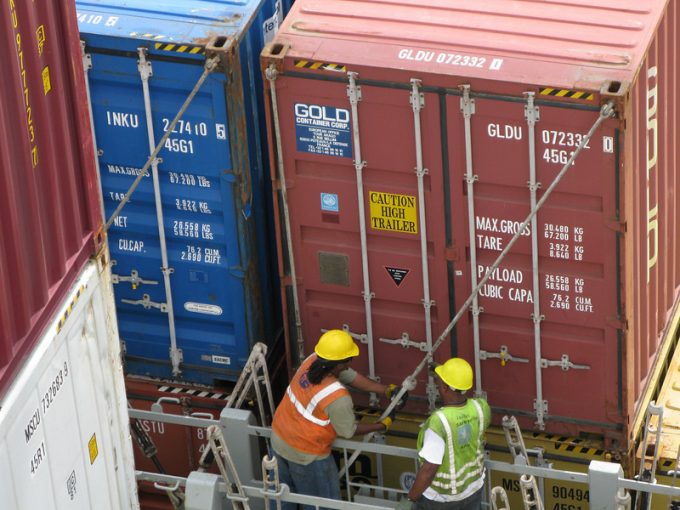Container spot rates have peaked as all major trades see prices fall
There was more evidence in this week’s container port freight markets that peak prices on ...
TFII: SOLID AS USUALMAERSK: WEAKENINGF: FALLING OFF A CLIFFAAPL: 'BOTTLENECK IN MAINLAND CHINA'AAPL: CHINA TRENDSDHL: GROWTH CAPEXR: ANOTHER SOLID DELIVERYMFT: HERE COMES THE FALLDSV: LOOK AT SCHENKER PERFORMANCEUPS: A WAVE OF DOWNGRADES DSV: BARGAIN BINKNX: EARNINGS OUTODFL: RISING AND FALLING AND THEN RISING
TFII: SOLID AS USUALMAERSK: WEAKENINGF: FALLING OFF A CLIFFAAPL: 'BOTTLENECK IN MAINLAND CHINA'AAPL: CHINA TRENDSDHL: GROWTH CAPEXR: ANOTHER SOLID DELIVERYMFT: HERE COMES THE FALLDSV: LOOK AT SCHENKER PERFORMANCEUPS: A WAVE OF DOWNGRADES DSV: BARGAIN BINKNX: EARNINGS OUTODFL: RISING AND FALLING AND THEN RISING

Contracted container shipping rates on the Asia-North Europe trade have probably reached rock bottom, according to forwarders operating on the trade and freight rate analyst Xeneta.
Xeneta managing director Patrick Berglund yesterday gave a freight rate analysis of the first three months on the westbound Asia-North Europe and eastbound transpacific trades.
Xeneta data shows a 78% decline in freight rates from Asia to North Europe in the average market spot rate from the beginning of January this year to the end of March. The average rate at the beginning of the year was $2,062 per 40ft, pushed up by a series of general rate increases in anticipation of Chinese New Year.
By the end of the quarter, the average spot rate had declined to just $464 per 40ft.
The decline in contract rates was less marked: in Q4 15, the average rate was $1,562 per 40ft, which declined to $1,124 in the first quarter of this year.
Mr Berglund said early indications for the second quarter indicated much the same level for the next three months, but increases were likely when shippers and carriers prepare for the crucial third quarter.
“This indicates to us that we have pretty much reached rock bottom level for Asia-North Europe rates,” he said.
John Good Shipping sales director and Far East specialist Paul Ferguson agreed that “rates on the trade have already dropped to near all-time lows”, and predicted they would have to increase for carriers to remain in business.
“What next?” he asked. “Whilst the current landscape is great for importers who are enjoying a prolonged period of low rates, in the long term this is not sustainable, and something must give.
“To put current rates into perspective, the price being paid in many instances on the spot market to ship a 40ft high-cube container from Shanghai to Felixstowe, some 13,000 miles, is actually less than a rush hour train ticket from Manchester, to London Euston!”
He predicted that shippers would either have to be prepared to pay more or accept a reduced number of services.
“Carriers cannot survive at these levels, and certainly cannot maintain the number of services and frequency of sailing many have become accustomed to. There were, reportedly, 230 sailings cancelled in 2015.
“The trend of cutting sailings, or omitting ports, with little or no warning, looks set to continue as carriers desperately look for measures to soak up excess capacity,” he added. “Of course, these actions can throw supply chains into disarray and lead to additional costs for importers that are perhaps not so easy to substantiate with production or deadlines being affected and end customers being let down.”
Mr Berglund agreed: “It is clearly unsustainable and there will be rate increases in 2016, especially on short term, because that is where the carriers have the most opportunity to adjust pricing.”
Comment on this article